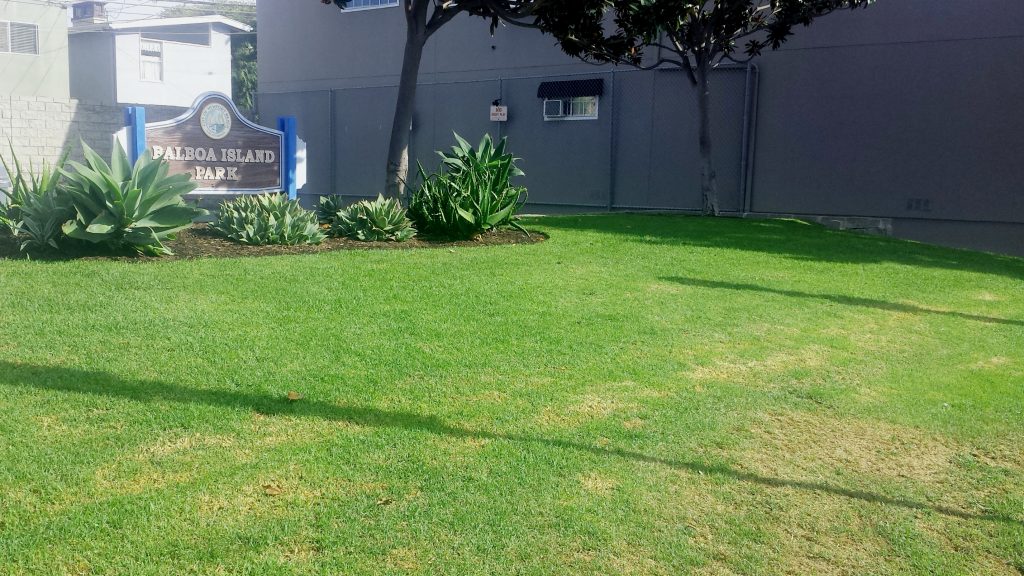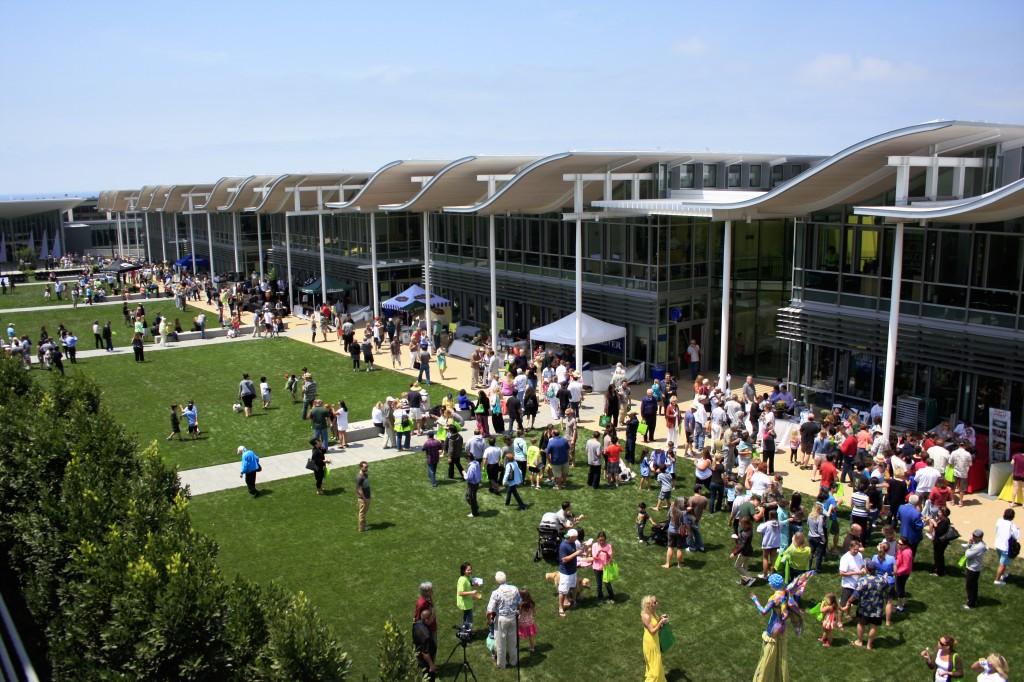
— Photo by Sara Hall ©
A hot topic on the national level, pest and weed management, has made its way to the local level in Newport Beach.
City Council members, residents, neighbors, and industry experts, spent nearly two hours discussing the topic and the city’s Integrated Pest Management Policy during a study session on Tuesday.
Newport’s study session comes after a jury awarded $80 million to a California man earlier this week, finding that Roundup was partly to blame for his cancer.
But opinions on the issue were mixed during the Newport Beach study session on Tuesday.
The results are still inconclusive, said Councilman Kevin Muldoon.
“The jury is still out on the harmfulness, or potential harmfulness, of some of these items,” Muldoon commented.
But decreasing the need to use pesticides is still a worthy goal, he noted.
The residents of Newport Beach deserve a choice. It’s a tough subject, he added.
“I put this item up because I thought of my newborn son,” Muldoon said, adding that he would more likely spend time with his son at a park free of pesticides.
He supports the idea of integrating organic management at select locations and using better signage so people are aware of the pesticides in use.
There was a lot of information provided during the study session they need to think and talk about and try to come up with the best possible solution, Councilwoman Joy Brenner noted.
Brenner would like to see the city further reduce the use of glyphosate, a chemical herbicide, in certain areas. Most people would likely tolerate a few more weeds if that meant using certain chemicals less, particularly in areas where dogs sniff around, she pointed out.
“It’s something we can’t risk using any more than we absolutely have to,” Brenner commented.
Before a decision is made they have to reach out to the community and gather feedback, Councilman Jeff Herdman added. He suggested having a community-wide town hall, getting a general consensus from the rest of the Council.

— Photo by Sara Hall ©
The locals whose kids use the fields and residents who walk their dogs in the city parks should provide their opinions, Brenner commented.
“Have them come down here and talk to us and tell us if they would rather have fields that are not as pristine, but lacking chemicals, or whether they would like us to continue to use what we’re using,” Brenner said. “It really is up to them.”
Nearly 30 public speakers, including several from nearby high schools, shared comments, concerns and observations for about an hour during the Tuesday meeting. Several Irvine locals spoke and said they were very happy with the all organic approach in their city and encouraged their Newport neighbors to do the same.
Kalen Hahn, a seventh grader at Orchard Hills Middle School in Irvine, said he wanted to steer away from the stats other speakers were sharing and talk to Council as a “human and a citizen of Southern California.”
Referring to staff’s point about how much more going organic would cost, the young man said there are more important things to consider.
“The fact that these people are taking into account money over people’s lives is just very bad,” Hahn said. “We should be thinking about the citizens and the constituents that voted for you and think about the health benefits that would come with going all organic.”
Other comments included that they would rather have weeds than spreading this harmful pesticide, research is “cherry-picked” from the chemical companies, prioritizing aesthetics over the health and safety, and more. Several told stories about friends, family members, and pets who got cancer or sick as a result of certain chemicals.
Some speakers cautioned the city against eliminating all of one material, and instead considering what is most effective and what works best for the area. Another speaker pointed out that how “toxic” is defined is crucial. Anything can be toxic with enough over-exposure, a few agreed.
Dr. Cheryl Wilen from the University of California Cooperative Extension integrated pest management program emphasized the Council not make a “knee-jerk” reaction.
“I would highly caution about doing a blanket removal,” Wilen said, referring to the suggestion of eliminating all synthetic pesticides. With her education and 30 years of experience, “even I don’t feel comfortable sometimes developing conclusions about this.”
Even the city and county of San Francisco, one of the first jurisdictions to take this type of approach in the early 1980s, still have exemptions for using synthetic pesticide in certain areas.
During the presentation, staff emphasized that the chemical method of prevention is the “last tool in the toolbox,” said Deputy Director of Public Works Micah Martin.
“We try to manage pests and vegetation by the most economical means with the least possible hazard to people, property, and thee environment,” Martin said. “We are very selective (about) where we use our spraying.”

— Photo by Sara Hall ©
Other methods, including cultural, sanitation, biological, mechanical/physical, and irrigation, are used “first and foremost” before they “spot spray” a type of “synthetic chemical,” added Parks and Trees Superintendent Dan Sereno. Methods like mulching, mowing, proper irrigation methods, and hand-pulling, he explained.
The city has progressively reduced the use of synthetic pesticides, staff noted. In 2017, the city used 137 gallons of Roundup but cut back by about 44.5 percent to 76 gallons in 2018.
“We’re always looking for opportunities to reduce the amount of synthetic chemicals we’re using,” Martin said. “The goal is to keep it to a minimum.”
On the civic center green, the large grass lawns centered between the civic center, main library and parking lot, weeds are mostly physically pulled out, Martin confirmed. There are times when that’s not enough and they do have to spray, but it’s minimal, he added.
At an active park, like Irvine Terrace Park in Corona del Mar or Bonita Canyon Sports Park, the turf is managed at a much higher standard level of expectation because of the playing surface. In order to keep it safe and playable they are more aggressive at tackling the weeds, which includes spraying it at times, he added.
Roundup is pretty benign to the user, but certain organics can be caustic and burn the user, Martin said. Organic pesticides are also topical, they don’t kill the weed at the root like synthetics do, he added.
During public comment, Vanessa Handy Armstrong of Costa Mesa said there are some organic herbicides that are “acutely” or “at that moment” more toxic and could burn the user’s hand, but it doesn’t create chronic and long-term health issues like synthetic chemicals, Handy Armstrong said.
But not all organic products will burn, she emphasized, and more of these products are coming to the market.
Weeds returning are likely caused by “organic by neglect” approach, Handy Armstrong said. Landscapers need to include inputs to improve soil health, which makes the grass stronger and chokes out the weeds naturally.
“It’s about a whole systems approach,” Handy Armstrong said.
Cost was also a focal point of the discussion.
If the city were to go completely organic, the total landscape maintenance costs could increase by about 20 to 30 percent, Martin noted. With a current budget of around $5.3 million, that would equate to between $1 million to $1.5 million, he explained.
But several public speakers said it was worth the extra cost.
“But when you think about the cost, would you rather have a lawsuit against the Newport [Beach] city government or pay an extra 20 to 30 percent per year for safe fields for everybody?” asked one student.

— Photo courtesy the city of Newport Beach ©




